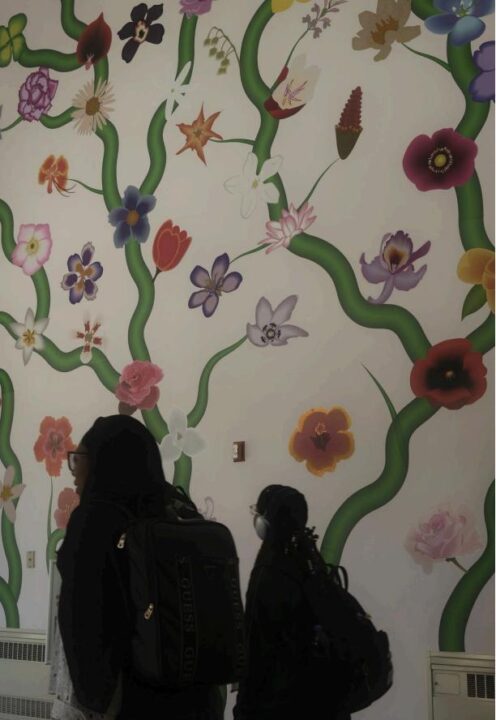Recently, the works of UMBC faculty, Doug Hamby and Carol Hess were performed by the Baltimore Dance Project in the Black Box theater. As directors of the Linehan Scholar Program at UMBC, various students across the discipline display their talents and capabilities on stage.
As a modern dance company, one of the most unique aspects of the program is that the performances incorporate visual and technological displays alongside the dancers creating a universal ethereal experience throughout the performance. With influences from everything from modern dance to ballet, the company created edgy yet provocative concepts that drew audiences in for the entire show.
The performance began with “Light Forest.” There were silk screens all across the stage that projected images of a lush forest. At first it seems as if the stage is empty, but as the lights dim from the silk screen you are able to see the dancers camouflaging into the images. Dancers Eric Holmes, Maia Schechter, Franki Trout, Desiree Koontz-Nachtrieb and Kendra Welborn light up the stage with their choreography, mimicking the natural landscapes displayed on the silk screens. For the scene of the lush forest, the dancers opened up their dance to the stage creating a more spatial comparison for the performance.
As the images change to a river to concrete to a pasture, the dancers mimic these natural landscapes through their performance. During the show the dancers seemed so natural in their movements – something that draws viewers into the story that they tell. With the use of multimedia and background music matching the landscape displayed in “Light Forest,” the dancers truly represented each natural background.
In the next performance, “In a Sea of Memories,” the show began to performances straying away from typical modern dance and incorporated ballet. With the classical rendition by Zoe Keating, this performance was both romantic and breathtaking. Both dancers created a story of a relationship and how inevitably discord arises. Interestingly, as the dancers began to stray away from each other on stage, they eventually came back together as one representing how love can be everlasting. The performance was wonderful with the classical background that continued to emphasize the beauty of romance with Valentine’s Day right around the corner.
One of the most memorable performances from the show was “Letting Go.” In this performance, the stage opens up to Maia Schechter holding a paper lantern. She gracefully dances across the stage the paper lantern that she holds illuminating the stage. As she dances throughout the performance, the light illuminates the choreography creating an unreal experience that is hard to find words to describe. It could be said that there was a level of spirituality and beauty incorporated into this modern choreography. This was one of the best performances of the night making it quite difficult to forget the beauty and natural elements to the performance.
The final performance of the night was closed with “Square Breath,” which juxtaposed various sounds from classical to electronic beats. Throughout the performance, issues of mental health are brought to light from the perspective of those that are diagnosed with them. As one dancer sits still at the table staring into the space, the rest of the dancers move about the stage erratically, representing what it is like inside the mind of those with mental illness. With screeching from the cello, this provocative performance brings to life what it is like to have a mental disorder and provides an image of the internal struggle that many face.
As soon as the curtains opened, everything was easily drawn in. The beautiful performances represented everything from nature to romance to issues of mental health. As a viewer you were able to follow alongside the performance and understand what was occurring. The performances were wonderful as each one figuratively and literally light up on stage. There was not a moment when the audience seemed bored or felt like any aspect of the performance were dragged out. The Baltimore Dance Project created more than just dance, it successfully created true entertainment.

